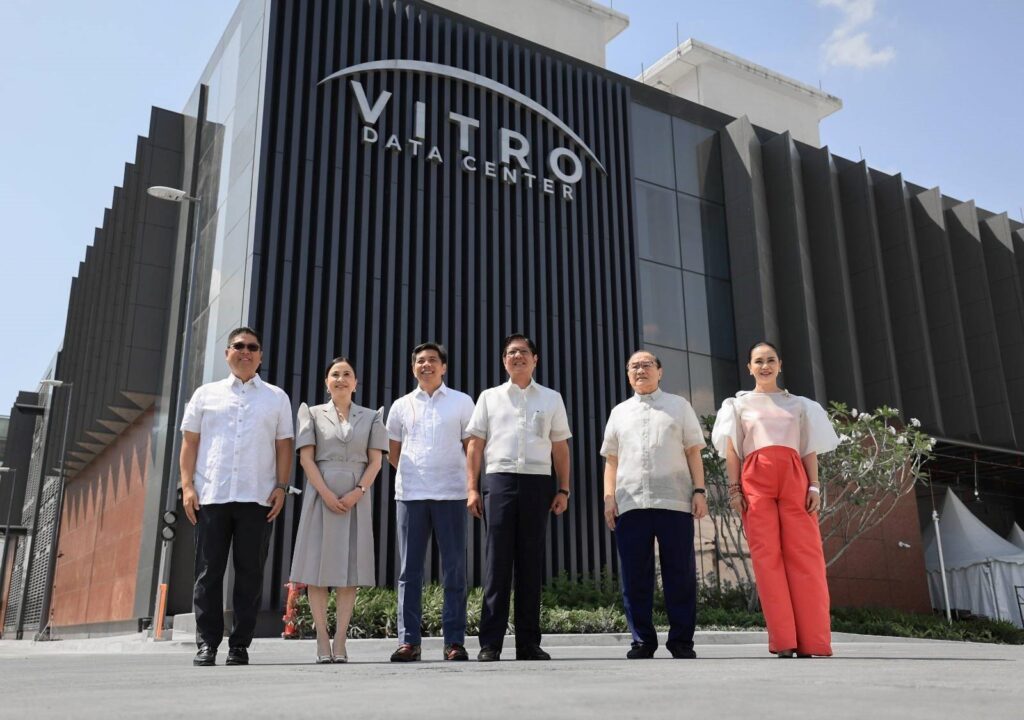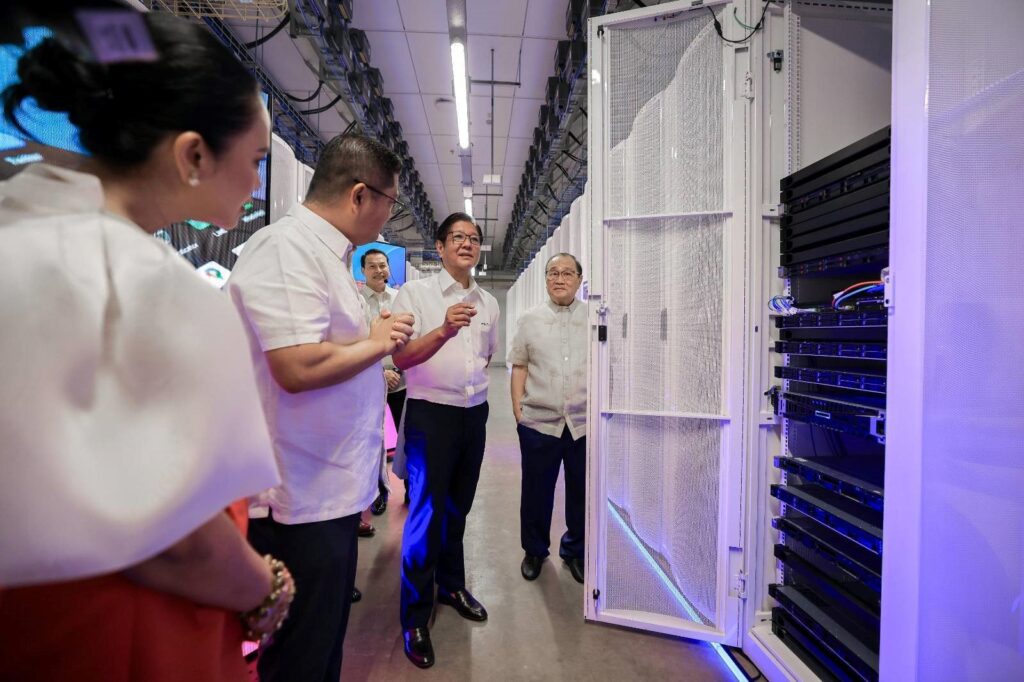|
Getting your Trinity Audio player ready...
|
The Philippines opened a new chapter in its digital transformation journey as President Ferdinand Marcos Jr. led the inauguration of the country’s first artificial intelligence (AI)-ready hyper-scale data center, signaling the government’s push to position the nation as a competitive player in the global digital economy.
Speaking at the launch of the VITRO Sta. Rosa (VSR) Data Center, Marcos called the facility “proof that the Philippines is future-ready for the digital realm,” underscoring its strategic role in strengthening data infrastructure, regional development, and digital security.
“We now have this incredible facility, which makes us AI-ready and definitely in the running to compete with our neighbors and our partners all around the world,” Marcos said. “That is a very important achievement.”

Building the future: AI-driven infrastructure in Laguna
VSR, developed by ePLDT and VITRO Inc., subsidiaries of PLDT, boasts 50 megawatts of capacity and is designed to support hyper-scale, cloud, and enterprise workloads, including those of tech giants like Google (NASDAQ: GOOGL), Amazon (NASDAQ: AMZN), and Meta (NASDAQ: META). It is the country’s first data center of its kind and is connected to major subsea cable systems that link the Philippines to the United States, Europe, and Asia.
The facility has an 11-layer physical security system and meets Tier 3 standards, allowing less than 1.6 hours of downtime annually. With the capacity to host more than 5,000 servers and powered by multiple energy sources and advanced cooling systems, VSR is positioned to support the rising demand for secure, high-speed data processing.
“This mega-infrastructure provides essential protection for sensitive data across the public and private sectors,” Marcos said. “In today’s world, data is as critical as water and electricity.”
The data center is also equipped with Nvidia (NASDAQ: NVDA) GPU servers, enabling ePLDT to offer GPU-as-a-Service (GPUaaS) to clients in sectors such as banking, healthcare, logistics, fintech, and government. The service allows companies to use AI technology without massive upfront investment.
Digital security and national preparedness

Marcos emphasized the growing need to secure digital systems and infrastructure amid increased reliance on technology in everyday life. “We need to strengthen further our digital infrastructure, especially for critical, private, and confidential data. We need to safeguard our digital security. We need to secure our digital future,” he said.
Widening access through national projects
Beyond high-end infrastructure, the President highlighted broader digital initiatives to increase internet accessibility and digital literacy across the country. These include the National Fiber Backbone (NFB) Project and the Free Public Internet Access Program.
Phase 1 of the NFB was launched in April 2024 and is set to enhance nationwide internet speed and connectivity by deploying fibre optic and wireless technologies. The full project is scheduled for completion by 2028. As of March 2025, the government has recorded over 11 million user sessions on its free Wi-Fi networks, including in geographically isolated and disadvantaged areas (GIDAs).
“These efforts are creating a more digitally connected and energy-aware environment,” Marcos said, adding that they are crucial for supporting hyperscale data centers and attracting more global investors.
Preparing the Filipino workforce for a digital economy
Alongside infrastructure development, Marcos pointed to the government’s efforts to build a skilled workforce to support the digital economy. Through the Digital Workforce Competitiveness Act, the administration aims to train Filipinos in digital skills and prepare them for future-ready jobs.
“We are equipping our people with the requisite expertise, anchoring on our broader goal to build a workforce that is future-ready, inclusive, and able to thrive in the digital economy,” he said.“Real progress comes from partnership – from trust, commitment, and shared vision,” he said. “To our visionary investors, I invite you to come explore the potential of Filipino ingenuity. Bring your technology here.”
Local economic boost and plans
PLDT Chairman Manuel Pangilinan, who also spoke at the event, expressed confidence that the VSR facility will stimulate local technology growth, create jobs, and attract further investments. Future expansion plans are already being explored, including a potential increase in capacity up to 500 MW.
“The VSR is especially notable for its AI capabilities,” Pangilinan said. “This will attract foreign investments, foster local technology development, and contribute to economic growth.”
Marcos echoed this optimism, stating that the facility is an investment in the future of every Filipino. “The Filipino student who studies and conducts research online. The small business owner who relies on social media and e-commerce. The Filipino worker who lives far from his or her family, counting on technology to bridge that distance – this infrastructure is for them,” he said.
In order for artificial intelligence (AI) to work right within the law and thrive in the face of growing challenges, it needs to integrate an enterprise blockchain system that ensures data input quality and ownership—allowing it to keep data safe while also guaranteeing the immutability of data. Check out CoinGeek’s coverage on this emerging tech to learn more why Enterprise blockchain will be the backbone of AI.
Watch The Philippines startup boom: Highlights from Sinigang Valley Build Startup Festival

 12-22-2025
12-22-2025 




